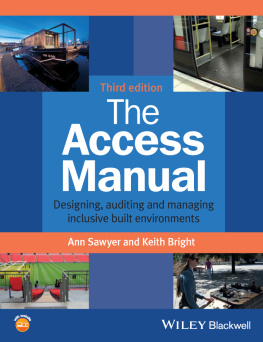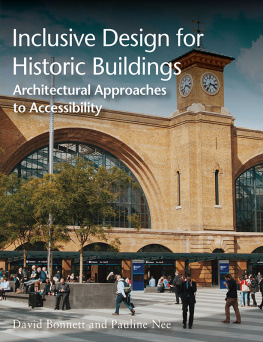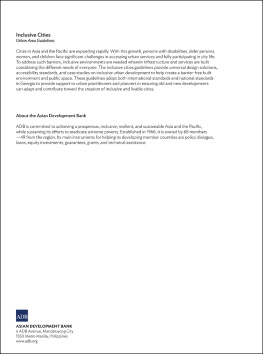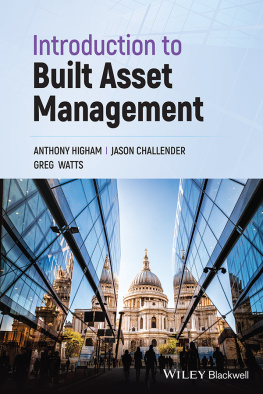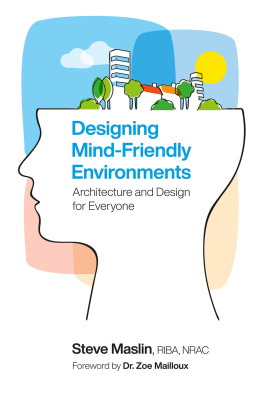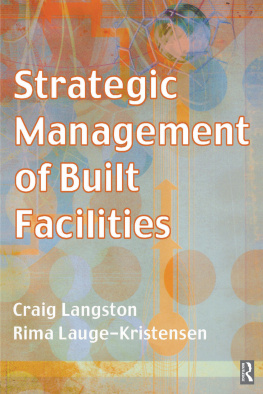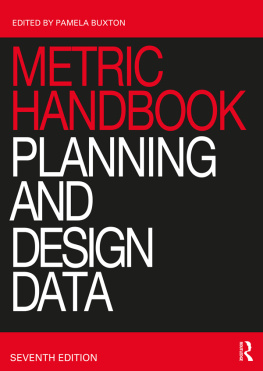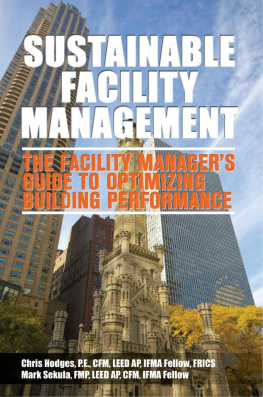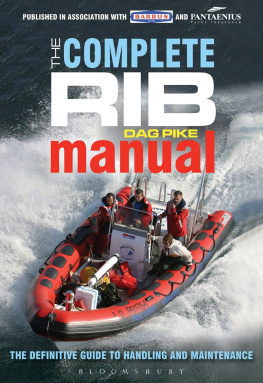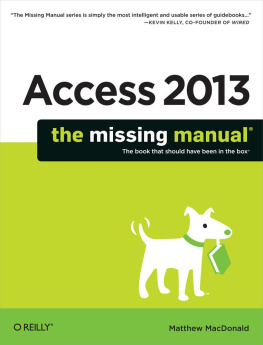
From the endorsements and reviews of previous editions:
I welcome this guidance which should enable people to understand access requirements and to undertake access audits. The law is important but how much better if those organisations simply did it right in the first place so the law did not need to be used. This book should help do just that.
Bert Massie, Chairman of Disability Right Commission
Please make the most of what you find in this volume, but please don't use it merely to achieve compliance. Use it to spark creativity, humanity and urbanity in the buildings and public spaces we all use every day, so nobody need feel this place isn't for me and everyone feels welcome.
Richard Simmonds, Chief Executive, CABE
This is a well-written and practical manual, recommended reading for building engineers concerned with the creation, planning and management of buildings.
Building Engineer
Incredibly informative will enable you to keep the edge over non-enlightened competitors.
Architectural Technology
This is an excellent book.
Access Journal
Both authors are well known for their work on access between them they have produced a useful book that is helpful in the context of our current built environment and what steps can be taken to improve access.
Barrierfree
This edition first published 2014
2014 by John Wiley and Sons, Ltd
1st edition 2004 Blackwell Publishing Ltd
2nd edition 2007 Blackwell Publishing Ltd
Registered office
John Wiley & Sons, Ltd, The Atrium, Southern Gate, Chichester, West Sussex, PO19 8SQ, United Kingdom.
Editorial offices:
9600 Garsington Road, Oxford, OX4 2DQ, United Kingdom.
The Atrium, Southern Gate, Chichester, West Sussex, PO19 8SQ, United Kingdom.
For details of our global editorial offices, for customer services and for information about how to apply for permission to reuse the copyright material in this book please see our website at www.wiley.com/wiley-blackwell.
The right of the author to be identified as the author of this work has been asserted in accordance with the UK Copyright, Designs and Patents Act 1988.
All rights reserved. No part of this publication may be reproduced, stored in a retrieval system, or transmitted, in any form or by any means, electronic, mechanical, photocopying, recording or otherwise, except as permitted by the UK Copyright, Designs and Patents Act 1988, without the prior permission of the publisher.
Designations used by companies to distinguish their products are often claimed as trademarks. All brand names and product names used in this book are trade names, service marks, trademarks or registered trademarks of their respective owners. The publisher is not associated with any product or vendor mentioned in this book.
Limit of Liability/Disclaimer of Warranty: While the publisher and author(s) have used their best efforts in preparing this book, they make no representations or warranties with respect to the accuracy or completeness of the contents of this book and specifically disclaim any implied warranties of merchantability or fitness for a particular purpose. It is sold on the understanding that the publisher is not engaged in rendering professional services and neither the publisher nor the author shall be liable for damages arising herefrom. If professional advice or other expert assistance is required, the services of a competent professional should be sought.
Library of Congress Cataloging-in-Publication Data
Sawyer, Ann, 1954
The access manual : designing, auditing and managing inclusive built environments / Ann Sawyer and Keith Bright. Third edition.
p. cm.
Includes index.
Includes bibliographical references and index.
ISBN 978-1-118-73074-4 (pbk. : alk. paper) 1. Barrier-free designGreat BritainHandbooks, manuals, etc. 2. Architectural designGreat BritainHandbooks, manuals, etc. 3. Building lawsGreat BritainHandbooks, manuals, etc. I. Bright, Keith. II. Title.
NA2545.P5S29 2014
720.87dc22
2014005220
A catalogue record for this book is available from the British Library.
Wiley also publishes its books in a variety of electronic formats. Some content that appears in print may not be available in electronic books.
Cover design by Sandra Heath.
By 2025, 2.5 million people will have joined the ranks of the active elderly they are entitled to choice and opportunity.
John H. Penton MBE
Chartered Architect and Registered Access Consultant
About the Authors
Ann Sawyer BA Dip. Arch. is an architect and access consultant. She works with architects, developers, building owners and facilities managers providing access consultancy services on new and existing buildings and environments. She advises on access and inclusive design, provides access appraisals and audits, advises on improvements to meet new legislative requirements and provides training in accessible design, auditing and the management of accessible environments. She has been involved in many prestigious new build and refurbishment projects for public and private sector clients and has advised on access to a wide variety of historic buildings. Ann is a member of the London Legacy Development Corporation Quality Review Panel, the South East Regional Design Panel and is an Urban Design London design surgeon.
Ann can be contacted at her consultancy practice Access Design on ann@accessdesign.co.uk and for more information about her work and consultancy services, see www.accessdesign.co.uk
Keith Bright is Emeritus Professor of Inclusive Environments at the University of Reading and an independent registered access consultant. He is a member of the Building Regulations Advisory Committee for England (BRAC), with a special interest in inclusive design issues, and a Design Advocate for the Design Commission for Wales. Keith is a Consultant member of the National Register of Access Consultants (NRAC) and the Royal Institution of Chartered Surveyors (RICS) Inclusive Environment Consultants Scheme (IEC). He served as Chairman of the NRAC Management Board until March 2012. From 2008 to 2014 Keith was a member of the Civic Trust Awards National Panel involved in the allocation of UK and international awards. From 2012 to 2014 he also served as Chairman of the national judging panel of the Selwyn Goldsmith Universal Design Award which is supported by the Civic Trust Awards.
His international roles have included working as an advisor to the Building Construction Authority in Singapore on issues related to Universal Design, and working with the Global Alliance on Accessible Technologies and Environments (GAATES) in the development of an international body for the certification and accreditation of access auditors and consultants.
Foreword
Innovative approaches to design by architects and their clients continue to provide us with buildings and spaces of exceptional quality. What makes a successful building or public space is difficult to encapsulate, but what is often universally demonstrated is a commitment by designers to strive for excellence in terms of aesthetics, environmental performance and inclusive design. The completed project should engage with and have a positive impact on its users. Buildings should of course make a visual statement, but at the Civic Trust Awards, we firmly believe in the concept that architecture and design should be people centred. Inclusive design has been at the forefront of our thinking since the 1990s, and we utilise the services of hundreds of access professionals, working alongside experienced architects, as part of our judging process to ensure this philosophy is maintained.
Next page
